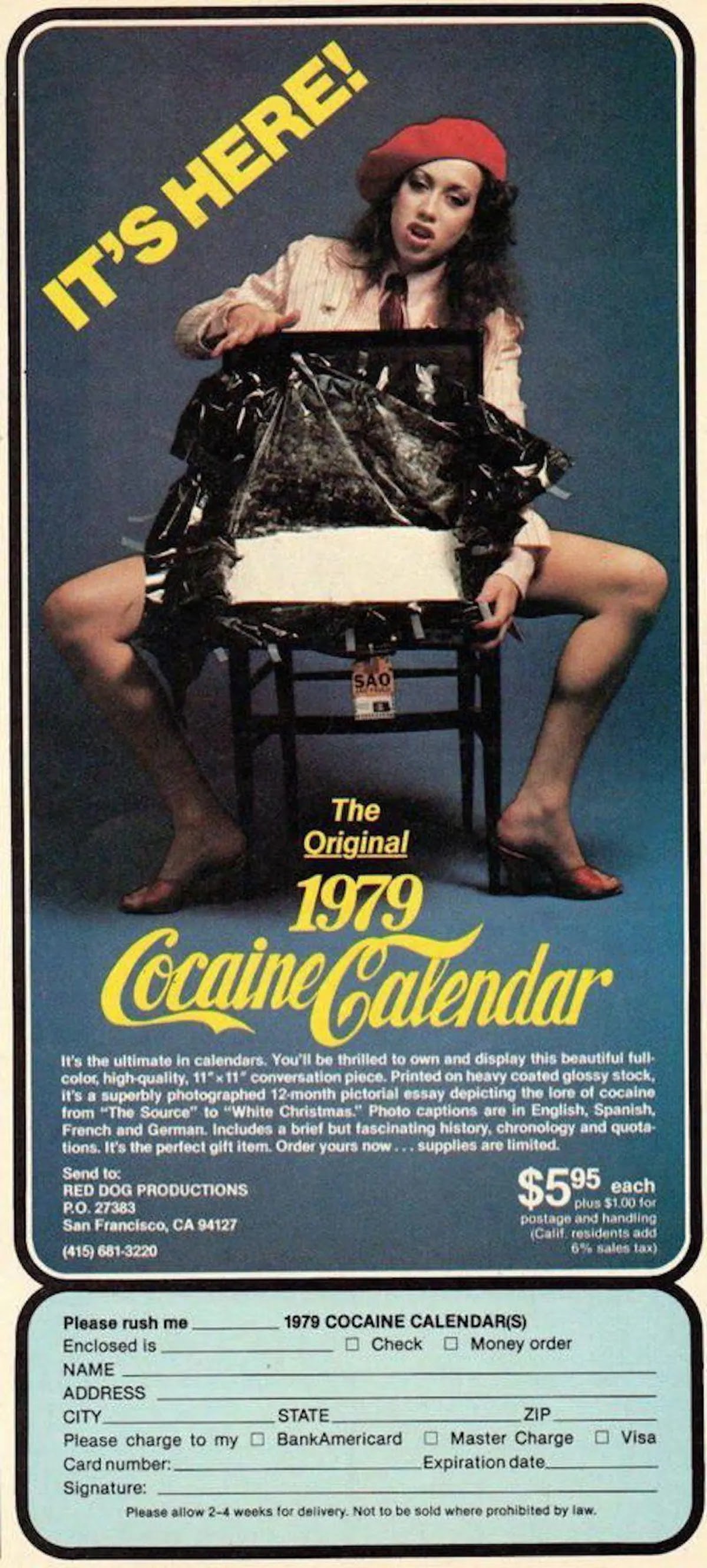A weird relic from the past: The 1979 Cocaine Calendar

Here's a strange relic from the past: a 1979 calendar dedicated to cocaine. Yes, you read that right, for cocaine. While the substance was illegal, it was not considered so bad (and it was common in magazines to advertise cocaine gadgets).
Each month's photo shows the coca plant at a different stage of its transition to cocaine powder, from its source in the Andes to its destination as a Christmas gift, and of course, users enjoying it.
Months are accompanied by quotes about cocaine from various sources. A brief history of cocaine and a chronology of history from AD 900 to 1979 are also on the front.
The calendar was published by Red Dog Productions in San Francisco. And, look at the font style of the calendar title... Does it sound familiar?
The calendar dropped just before the start of President Reagan's era and the War on Drugs, when a US government report described cocaine as "not physically addictive, and does not usually have serious social consequences, such as crime, hospital emergency." Room entry, or death”.

The 1970s experienced an increase in the popularity of cocaine use, peaking in the 1980s. During this time, cocaine was associated with celebrities, high rollers and glamorous parties.
Rolling Stone magazine profiled the decade as one of "extreme" sexual activity, drug use, and of course rock music. A survey conducted by the magazine found that 20 percent of respondents admitted to trying cocaine.
In addition, as the Civil Rights movement saw victory after victory for black Americans, the negative association between race and cocaine dissipated.
Cocaine became the kind of drug that rock stars and celebrities used to be up in the night, having unbridled fun, and being part of a scene that was irresistibly decadent and alluring, making it the ultimate social lubricant and status symbol .

Corners had to be cut. Suppliers used simple baking soda to dilute the powdered, pure cocaine, making it cheaper to make and buy.
This new, nasty form of cocaine was no longer in the realm of the rich and famous; Now, even the disenfranchised and poverty-stricken people can get their hands on drugs.
Making this form of cocaine involves heating it until it produces a crackling sound, call it: crack cocaine, freebase cocaine, or simply "crack."
When it hit the market, crack cocaine took hold in a big way. The Primary Care Journal writes that hospitalizations for medical emergencies resulting from crack cocaine use increased by more than 100 percent from 1985 to 1986, during which time inner cities and gangs began distributing it.




No comments: